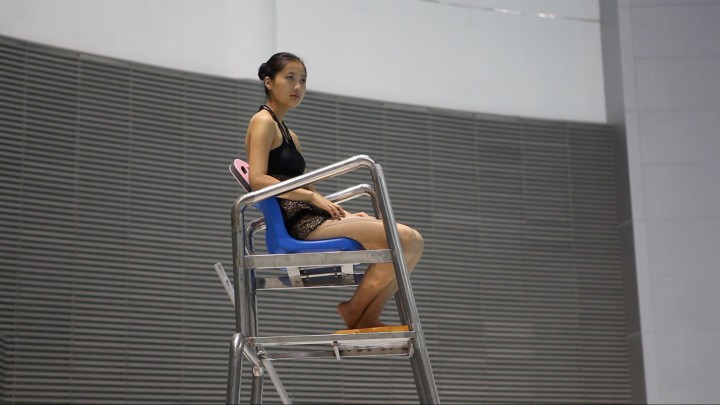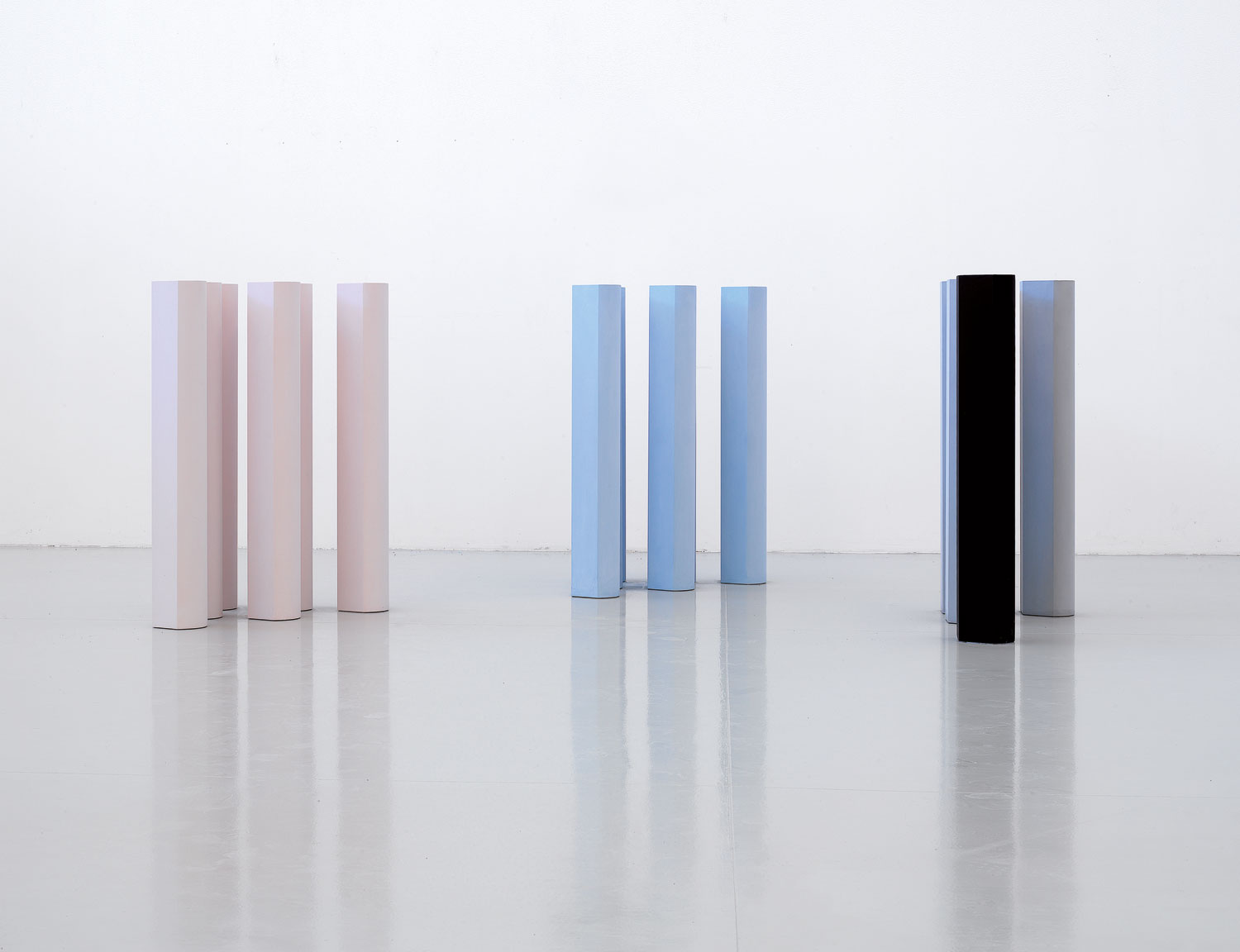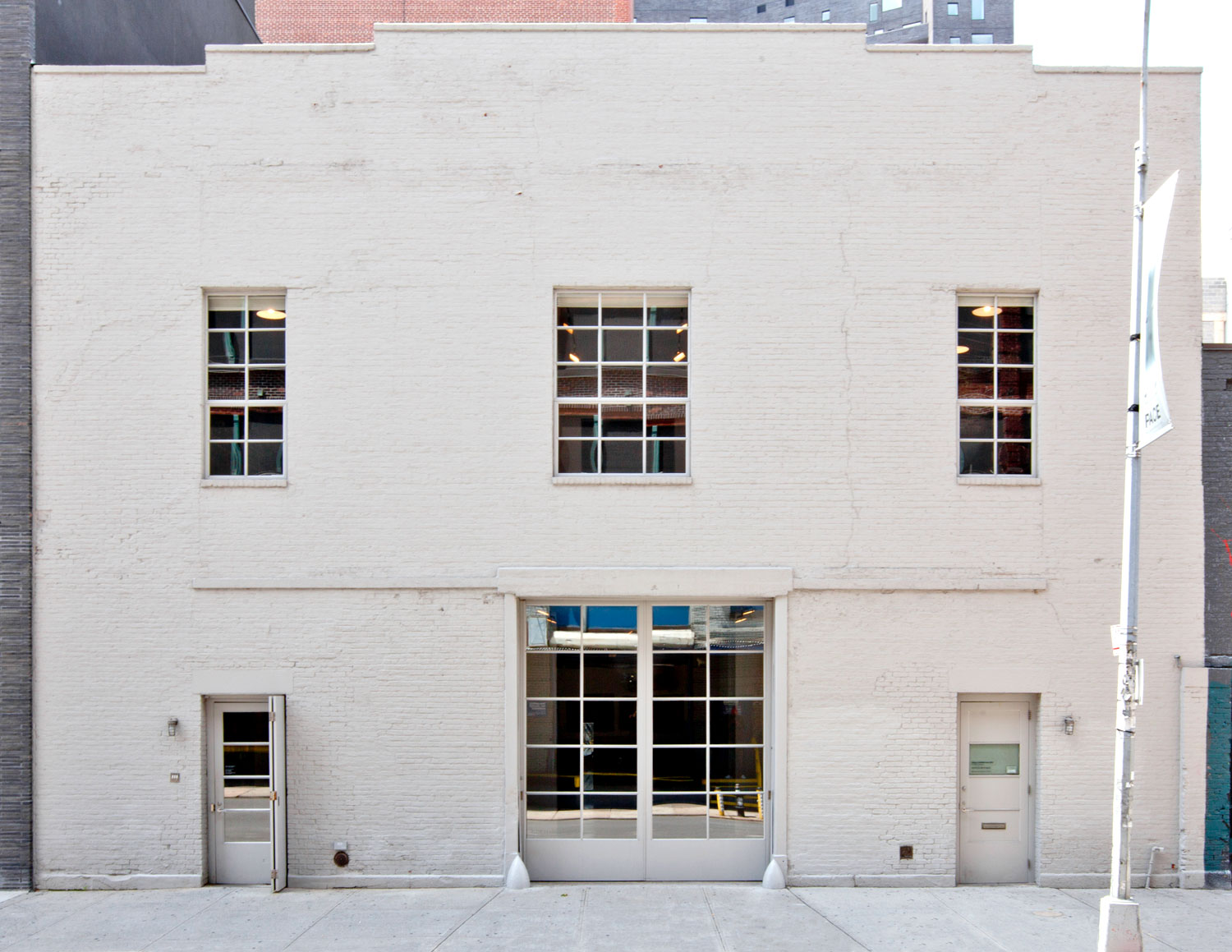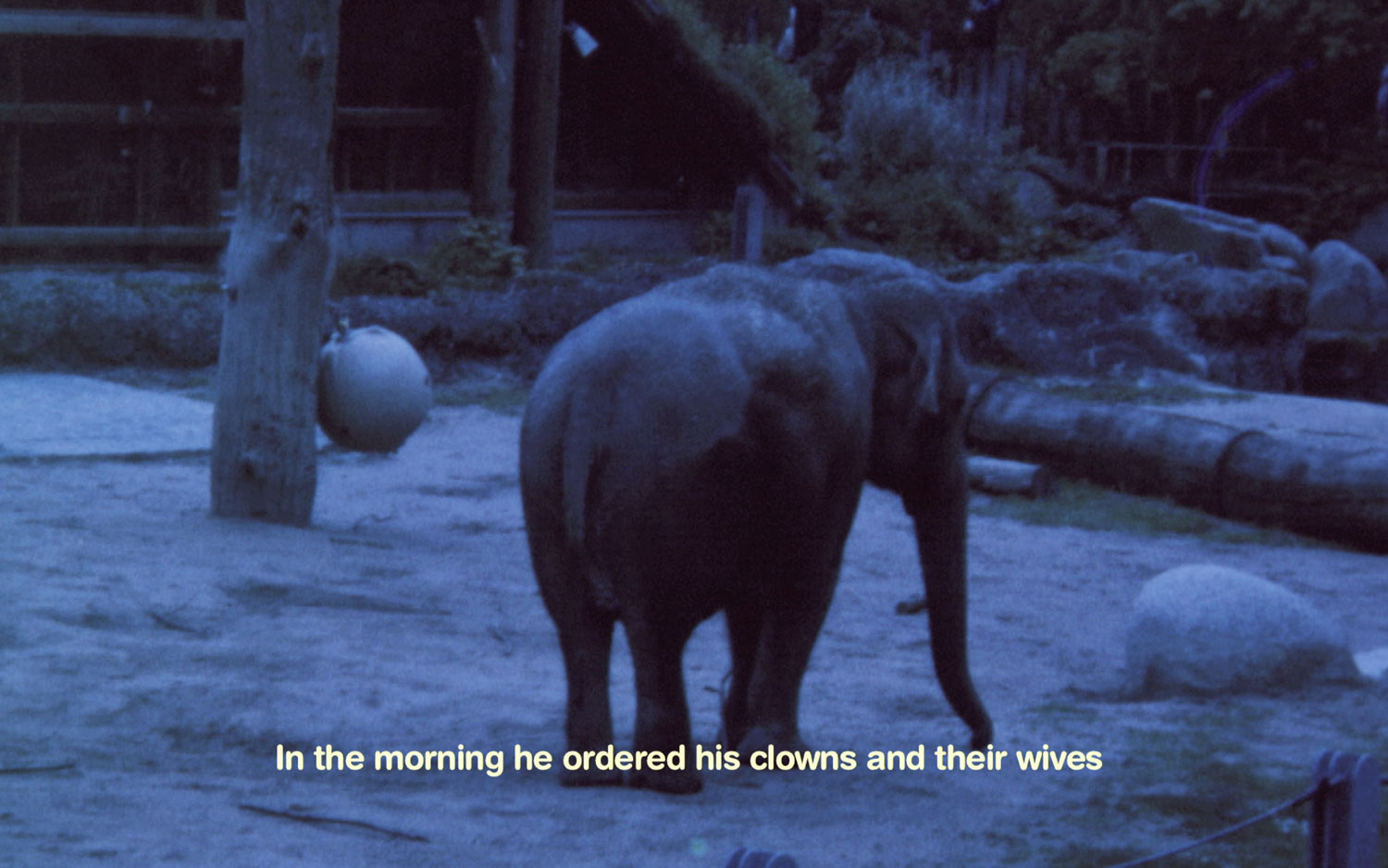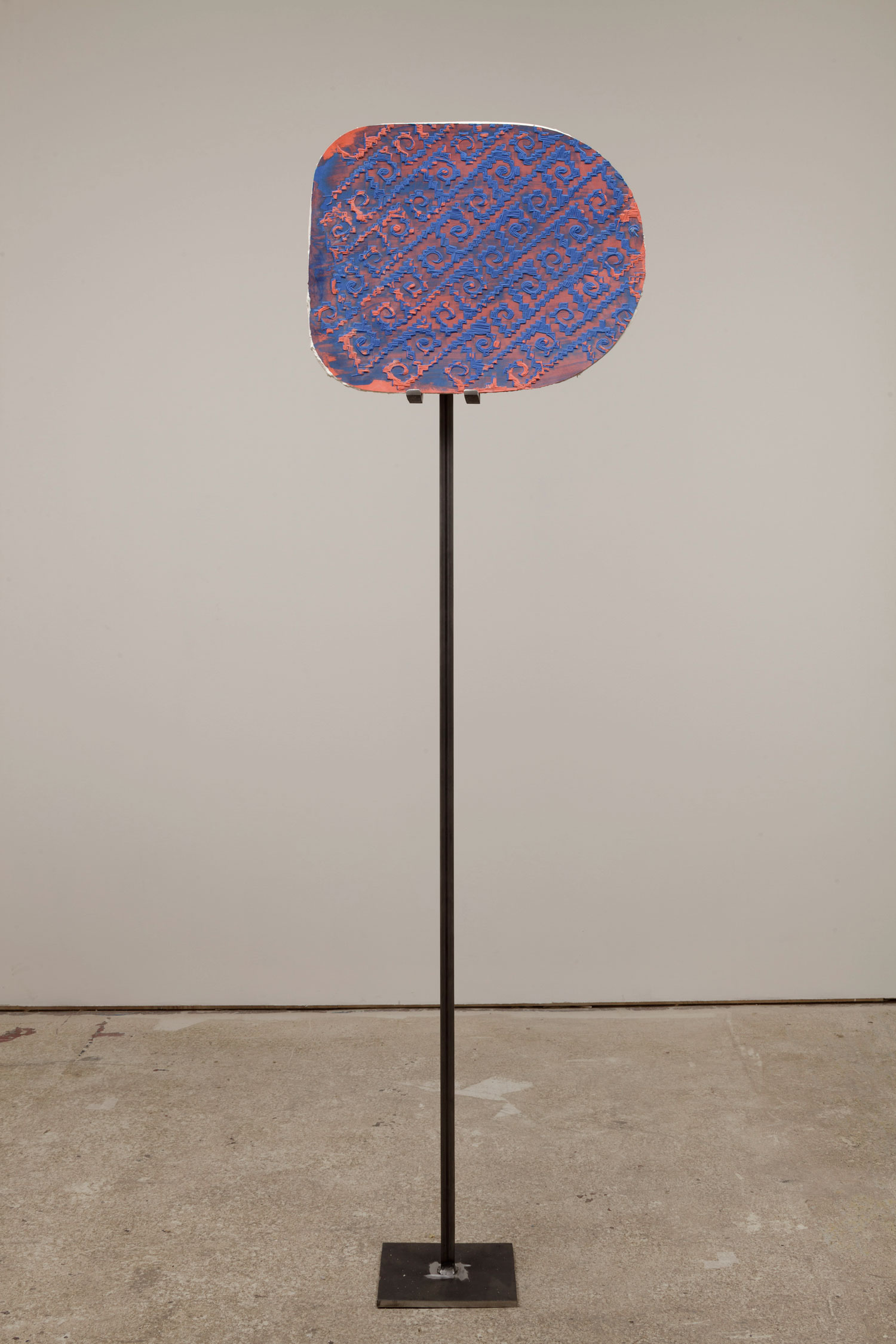
In the 7-channel video Cinema (2013) by Fang Lu, a woman walks into an apparently empty theatre, the stage area flanked on three sides by raked seating. She climbs up one aisle to a small console, and sits facing the stage and a large hanging screen, on which is projected a live feed from a camera pointing at her. The console has been prepared for her to present her image on this screen, with controls for a series of cameras positioned around the theatre space, allowing her to pull the zoom and focus of each and mix between them. To accompany her actions, a small group of musicians is revealed in one camera angle to be sitting on one side, providing an improvised abstract electronic score.
However, as experienced in the gallery space this ensemble of images begins to reveal small discrepancies between the world of the woman and its presentation. Upon entering the theatre, the woman’s footsteps carry on for a few seconds after she has sat down, and every now and again there is an unaccountable delay between her manipulations of the console and the movements of the cameras. Within these discrepancies we start to lose a connection between what we see and what we think she sees. While she is intent on watching the screen, creating her own image, we cannot be certain what that image really is. This latest work by Fang Lu distills many of the artist’s ongoing concerns with disjointed realities, through reenactments realized as ritualistic or obsessive activities performed by herself or her protagonists. They perform in a world of their own, and in these worlds they seem self-sufficient, yet we cannot forget our own place looking into their worlds. For Cinema Fang, “asked the woman to control her emotions in the same way as the mechanisms”[Conversation between the artist and the author, September 2013.] If emotions are mechanisms to be manipulated, as part of the image-making apparatus in the theatre, then that suggests that the audience could also be included as objects of manipulation. The woman knows she is being watched; she controls her image for herself, for the artist, and for the future audience.
In the series of videos News Reenactment (2008) the artist recreates small incidents reported in her local press: some men wear motorcycle helmets and set fireworks off in a village; a man is slapped by a woman he is kneeling in front of; a security guard berates a driver for his parking and gets beaten for his trouble. The staging of these works is evident, as they have been shot from multiple angles and edited together, an artifice that is said to demonstrate the artist’s interest in “the relationship between media and the everyday”[Carol Yinghua Lu, “Unrecording,” in Unrecording: Fang Lu’s Solo Exhibition, Space Station, Beijing, 2010, paragraph 2.] But I would suggest we could read this relationship as going far wider, to implicate all stages of the image-making process in what amounts to a questioning of the discrete role of each participant and mechanism in the creation of meaning through these performances and their representations.
Ritual is a practice that “engenders isolation from reality” [Chen Tong, “Home, or Studio?,” translated by Lee Ambrozy, in Eclipse, Fang Lu Video Exhibition, Borges Libreria Contemporary Art Institute, Guangzhou, 2011, paragraph 3.] Such isolation acts as a buffer between the protagonists’ actions and their immersion into what might be understood as ‘everyday life’ and from a connection with the viewer: the preparation of food; the practice of love; the wearing of clothes. In this way all activities in these videos are ritualized, becoming de-territorialized from their original locations and meanings. While it might be difficult to pin down possible meanings, there is no doubt that there is a strong intention towards meaning in all these actions. This intention lifts the activities out of simply ‘taking place’ and into an alternate time-scale in which purpose is paramount as an end in itself.

The artist maintains her protagonists in a state midway between being directed and improvising their actions. The subtle dividing line between act and reality is important, as the artist asks of the protagonists “to play out a certain designated role, emotion or state of being, in an isolated space, and for a sufficient period of time until this ‘acted’ or ‘artificial’ state of being becomes a genuine condition” [Lu, ibid, paragraph 5.] This can be seen clearly in the work Density (2004), where two seated actors violently move their chairs into new positions by scraping them around a limited floor area while holding themselves in their seats, until the activity takes on a frantic character. Density begins with a sequence playing in reverse, so the first shot we see is of the exhausted performer lying on the floor having fallen out of her chair, and then rising up in reverse to ‘begin’ her activity.
Such editing decisions appear in other works by the artist as another way in which the reality of the situations is adjusted. In Skin (2009) the artist dresses and undresses using all the clothes in her wardrobe, in seemingly never-ending succession. For both Density and Skin the action becomes the end. For the protagonists there is nothing beyond a performance of the action, and “the pointlessness of the action becomes the consciousness of the artist…”[Chen, ibid, paragraph 5.]
The subjects and the spectator are not left unassisted though; the artist speaks of an “intermediary” situated between the two. Fang has described this intermediary as another entity through which we must act, and without which her various protagonists cannot relate to each other. This can be another protagonist or a mechanism that facilitates the putting into play of their relationship. In Structure of Sentiment (2012) a couple enters a sports stadium together, pulling rolling luggage behind them, but soon separates. The man moves up into the seating overlooking the field to place various household items from his suitcase on specific seats. The seat numbers are specified by the woman, who first relays this information to staff in a control room, who then display the numbers on the stadium scoreboard for the man to see. As the couple get physically further apart, their communication becomes more and more elaborate, until in an apartment high up in a building the woman uses her finger to dab yoghurt onto the window as the man plays tennis down below, as if recording his score in grids of white dots.

In Lovers Are Artists – Part 1 (2012), a woman acts out a series of elaborate tasks, which may also be a means of expressing her relationship with an absent partner. The woman’s general emotional state seems initially despondent before she rouses herself to wash and collect her rucksack and bicycle, leaving her small room to visit nearby grocery stores where she buys fruit and vegetables. These serve as the raw materials for small actions in the street, including laying flat-breads out along a road and jumping from one to the other; sticking a sheet of white paper onto a wall and spitting chewed fruit onto it, which she then signs with her name; or attaching bunches of spring onions to her bicycle with plastic ties. All this takes place with utter seriousness on the part of the woman, in contrast to the bemusement of passers-by.
These links to the preparation of food — and other domestic activities — repeatedly surface in Fang Lu’s videos. The hotel-staff who populate the video Housework Ritual (2009) wash red and green peppers in the baths of the rooms and chop vegetables on the reception desk. On a bed, three members of the staff form an endless chain washing, rinsing, and drying crockery; in the lifts which run up the outside of the hotel, one woman stitches brightly colored buttons onto the dress of another. Another series of videos ostensibly take the preparation of eggs as their subject. In each case the artist sits at a small table in front of the camera, and performs the task with minimal elaboration: using the heel of her shoe and then a telephone handset to smash the eggs; fitting all the eggs into a ski hat that she wears on her head, which a colleague then gently crack with a hammer. The overall title, How to Eat Eggs (2009), and the very po-faced format suggests that these are meant to resemble didactic presentations, yet the actions belie any informational content. The artist appears again — but obscured by a motorcycle helmet — in Automatic Happening (2010), where she prepares food in bizarre ways and under strict time limits dictated by a continually reset alarm clock. The studio-based format of this piece is repeated in Rotten (2011) in which a woman sits motionless on a chair while a team prepares foodstuffs that they then attach to her body in fantastical arrangements.
Through the events in her videos Fang Lu forces the viewers to question their relationship with the people presented in them. The nature of the protagonists’ behavior, and the subsequent mode of presentation of that behavior, upset a complacent reading of these bodies, building an understanding of them as somewhere between a life and a mechanism, and as such putting us into a new, intense relationship with them.

